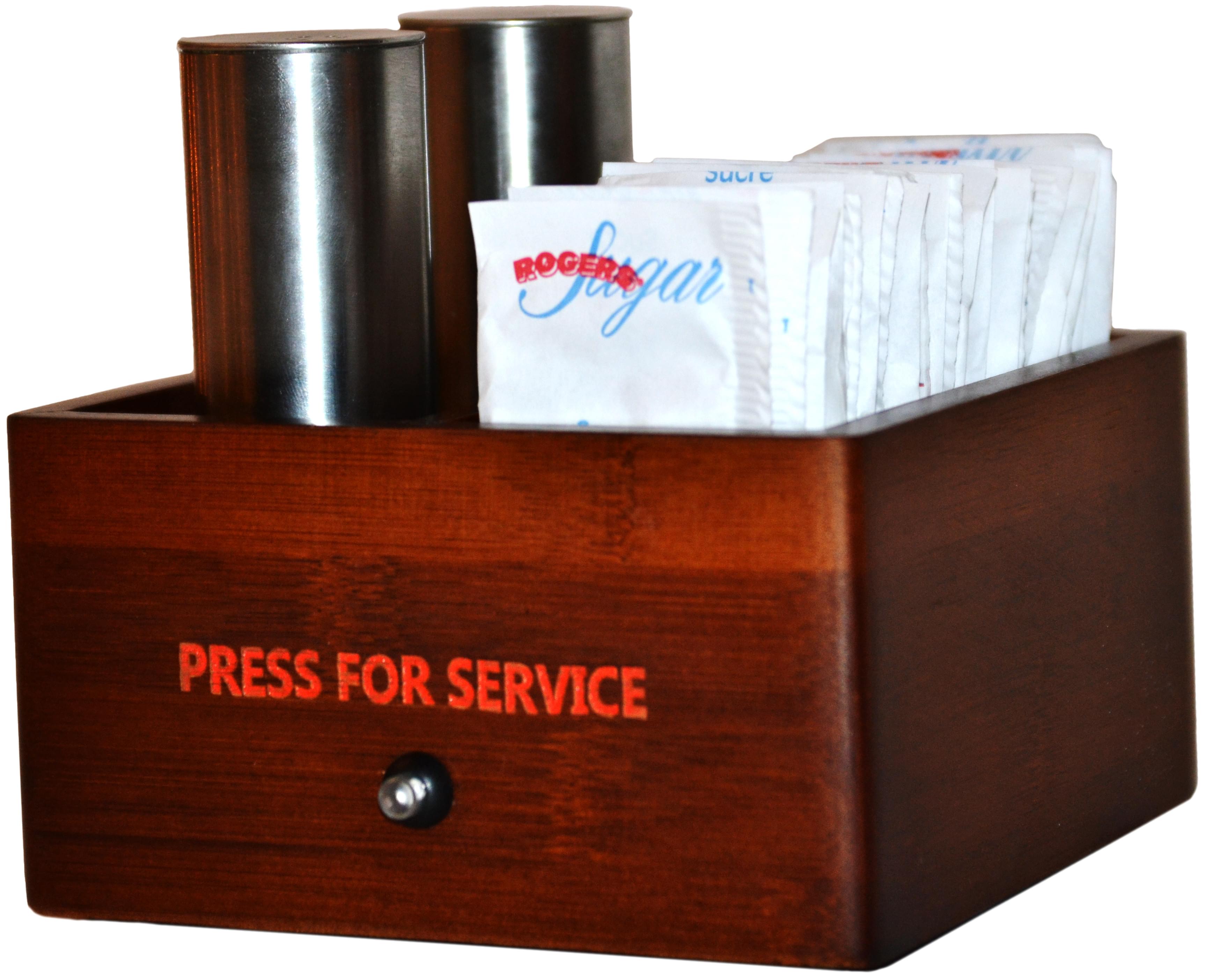This isn’t a dropshipping success story, a lucrative exit, or a guide. This is a silly story documenting our failed hardware startup. It’s embarrassing to fail, so we seldom hear these stories, but I’m going to tell you one, here goes.
Fresh out of college a decade ago, I landed my first job as an “Electromechanical Technologist”. Here’s a graphic to describe my mindset.

The software engineer at my company had a side hustle selling point of sale machines to restaurants. One day he confronted me with a venture. The idea was to build and sell restaurant table pagers. It was simple: press the button, and the server shows up. Our device would outshine existing products, connecting seamlessly with phones, tablets, and computers. I was excited about the project and jumped on board immediately. I did all the hardware, and he did all the software. It was built with beautifully stained bamboo and neatly held condiments on the table.

The technology utilized low-power radios and could last for years on a single AA battery. My partner developed a great app, and we were eager to receive feedback, which leads me to my first point.
Skip Market Research
We relied on the encouragement of friends and family, assuming they represented the entire market. Little did we realize that this approach had significant flaws. If we had conducted proper market research, we would have discovered these crucial insights:
- Restaurant Owners: Typically financially strained.
- Patrons: Not everyone feels comfortable using a pager.
- Restaurant workers: resistant to changing their workflow (rightfully so).
Three major issues with our three customers, we’re off to a good start! Let’s get to the next mistake.
Skip Market Testing
After building a few devices, we started receiving volume quotes for the enclosure. We were quoted $5,000 for 1,000 units ($5/unit) and a smaller quote of $1,000 for 75 units ($13/unit). This was our first significant expense, and as 20 year old, this was a lot of cash.
We were aiming for a sub-$10 target for the device. Focusing on margins so early on was one of our many mistakes. Since we skipped market research, our goal should have been to test the market. We needed to determine if people would buy the hardware, and the cost of conducting this test was $1,000 or $5,000.
We chose to pay $5,000 to test the market.

Don’t Collect People’s money
Our HQ was the grubby basement of a restaurant in a strip mall. Rats were involved, but we didn’t care; this is ground zero for all startups.
The semi driver dropped off our pallet in the strip mall parking lot. He shook his head when we told him we didn’t have a forklift. Nevertheless, excitement filled the air as we unpacked 1,000 units into the basement. We had verbal orders from nearby establishments and could finally deliver on them. When we showed up, one by one, excuses started pouring in. Without any financial commitment from customers, our orders meant nothing.
Get cash in hand, or at least a deposit.
Try Selling Ice
At this point, we felt defeated. We were tired of looking at the basement filled with unsold products, so we finally admitted to needing a salesperson. We connected with a local sales guy who specialized in selling restaurant equipment. He had a reputation for being a smooth talker, claiming he could “sell ice to an Eskimo.” With him onboard, we hoped that our luck would turn around.
Unfortunately, even with his sales expertise, he couldn’t sell our product either. We found ourselves back at ground zero, feeling discouraged and uncertain about the future of our startup.
A good sales team won’t be able to sell flawed products, but they are the necessary prerequisite.
Don’t Pivot
During one of my partner’s visits to the physiotherapist, he happened to mention our venture. The physiotherapist was intrigued. He needed a system for his assistants to page him when patients were ready for inspection. On the spot, he purchased our system, with the condition that it came in a more reasonable enclosure.
At that point, we regretted spending $5,000 instead of the $1,000 option for enclosures. Nevertheless, we designed different enclosures and delivered them to our first real customer. Since he had offices all over the province, he expressed interest in buying more. Revisiting the initial customer analysis.
- Physiotherapists: Have money.
- Office workers: More inclined to change their workflow if it benefits everyone.
- Patrons: Don’t have to use the tech.
Another thing to mention is that this customer could see our product affecting his bottom line, which wasn’t obvious when dealing with restaurant owners.
With a mechanical modification, our technology worked perfectly for a different, better customer.
Finally
Despite the success of the pivot, the project eventually fizzled out. By then, I had moved on to another job and was busy with travel, unable to support the electrical side of the business. I became disillusioned with the support required and pursued other exciting ventures.
The project now sits in an undocumented, open source repository with zero stars. I realize our mistakes were preventable; we could have produced a better outcome by reading a book or hiring a business person, but that’s not what happened. We acted out of impulse and blissful ignorance and paid the price. If I could go back in time, I wouldn’t change a thing.






